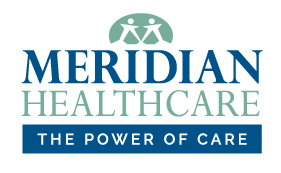What’s the Difference Between MD and DO? Understanding Primary Care Doctors
What’s the difference – Medical Doctor (MD) and Doctor of Osteopathic Medicine (DO)? With so many healthcare provider options, choosing a primary care physician can be confusing. Whether you are new to choosing a family doctor or have been searching for years, it’s essential to understand what each doctor’s title means before deciding which one best suits your needs.
There are similarities and differences between MD and DO physicians, including medical education, philosophies behind practicing medicine, and degree specialties. Make the most informed choice for yourself by understanding the background of your next primary care physician.
Overview of MD and DO Degrees
Attending medical school is no easy feat, but those who have the passion and drive to pursue a career in medicine can choose to earn either a Doctor of Medicine (MD) or a Doctor of Osteopathic Medicine (DO) degree. Both pathways require rigorous coursework followed by hands-on experience through a residency program; so, you’re in good hands no matter what.
Although there are similarities between the two degrees, there are also some notable differences. MD programs typically focus on a more traditional, science-based curriculum called allopathic medicine, while DO programs emphasize a more holistic approach to patient care, taking the body’s musculoskeletal system and whole body into account.
How Are Medical Doctors and Osteopathic Physicians Similar?
These two types of doctors are more similar than you might think. Both require extensive medical training, including intense classroom instruction followed by hands-on clinical rotations, and both MDs and DOs obtain licensure through licensing exams to practice family medicine. Both must also pass the medical college admission test (MCAT) after completing a pre-med bachelor’s degree and then complete four years of med school.
According to the American Osteopathic Association (AOA), there’s been an 81% increase in DOs and osteopathic students since 2012.
The Difference: DO vs MD
While MDs and DOs have similarities, the main difference between the two is that DOs complete osteopathic manipulative medicine (OMM) to treat the whole person. This is a more comprehensive approach that uses osteopathic manipulative treatment to diagnose and manage patients.
Hitting the Books
The curriculum for an MD and a DO share many similarities, but there are some distinct differences between the types of medical students, as well.
MD Degree Curriculum
MD students take the USMLE, a comprehensive exam that helps to determine if the person is ready to become a doctor (more so than MCAT scores).
-
- Pre-Med Education: Students typically complete a bachelor’s degree with coursework in biology, chemistry, physics,mathematics or another related science. These courses lay the foundation for medical school.
- Medical School: MD school is a four-year program consisting of two main components: pre-clinical and clinical training.
Pre-Clinical Years
The first two years focus on foundational knowledge and include subjects like anatomy, physiology, biochemistry, pharmacology, pathology, and medical ethics. Students learn about the human body and its systems, disease processes, and medical sciences.
Clinical Years
The last two years of med school include clinical rotations in different specialties, such as internal medicine, surgery, pediatrics, obstetrics and gynecology, psychiatry, and others. During these rotations, students gain practical experience, work directly with patients, and learn from supervising physicians.
-
-
- MD Residency Training: After graduating from medical school, MDs enter residency training in a chosen specialty. Residency programs typically last three to seven years, depending on the specialty. During residency, physicians receive hands-on training, supervised practice, and further specialization in their chosen field.
-
DO Degree Curriculum
The curriculum for DOs is similar to that of MDs but with additional training in osteopathic principles and techniques. While in med school, DOs receive education and training in the same core medical sciences and clinical areas as MDs. A COMLEX or USMLE exam is taken as part of the path to obtaining a degree.
-
- Pre-Medical Education: Similar to MDs, DOs also complete a bachelor’s degree with coursework in the sciences.
- Osteopathic Medical School: Osteopathic medical school is a four-year program, similar to MD programs, with both pre-clinical and clinical training.
Pre-Clinical Years
The first two years cover the same foundational sciences as MD programs. However, DO students also receive additional training in osteopathic principles and osteopathic manipulative treatment (OMT). OMT involves hands-on techniques used to diagnose and treat musculoskeletal conditions.
Clinical Years
Like MD programs, DO programs also involve clinical rotations in various specialties.
-
-
- DO Residency Training: DO graduates pursue residency training in their chosen specialty, just like MDs. The duration of residency depends on the specific field of specialization.
-
It’s important to note that both medical doctors and osteopathic physicians complete rigorous medical education and training. They both go through standardized licensing examinations and can practice medicine in a wide range of specialties. (That being said, The American Medical Association states that most DOs choose primary care.)
Allopathic and Osteopathic Schooling
To be accepted into medical school, whether the school has accreditation or not, a student needs to have a bachelor’s degree, a high average GPA, and letters of recommendation. Both an MD and a DO need to complete four years of medical school.
Some elite, well-known allopathic medical schools include the following locations:
- Harvard Medical School
- Mayo Clinic School of Medicine
- University of Oxford Medical Science Division in England
On the other hand, prominent osteopathic med schools include the following:
- Des Moines University College of Osteopathic Medicine
- Lake Erie College of Osteopathic Medicine
- Michigan State University College of Osteopathic Medicine
Upon med school completion, DOs tend to choose primary care specialties (family, pediatrics, internal, OB/GYN). Similarly, close to 80% of MDs work in preventative medicine.
Which Primary Care Doctor Is Best for You?
When it comes to receiving medical care, the decision between a DO vs MD should be based on your personal preferences and specific healthcare needs. Now that you have an idea of the difference between MD and DO physicians, you can make a more informed decision!
Both types of doctors have graduate medical education after spending years in medical school, passing medical licensing examinations, and choosing to focus on family or internal medicine.
Looking for a primary care doctor you can trust? Meridian HealthCare’s physicians are some of the best, and work with you to achieve complete, balanced and effective care. Contact us today to begin your path to wellness!





